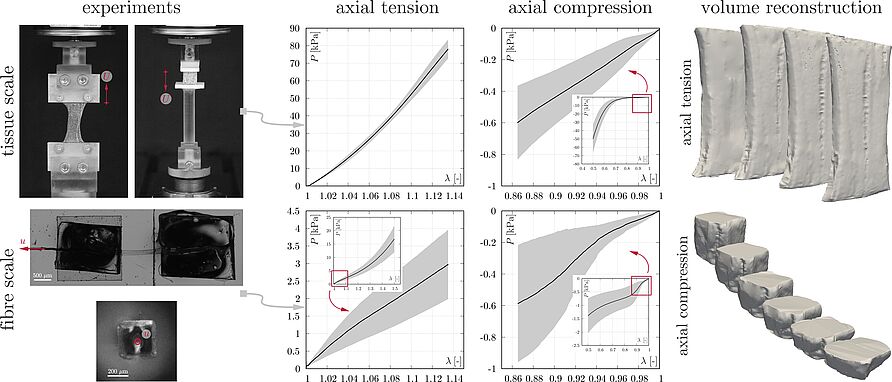Skeletal muscle tissue shows a clear asymmetry with regard to the passive stresses under tensile and compressive deformation, referred to as tension-compression asymmetry (TCA). The present study is the first one reporting on TCA at different length scales, associated with muscle tissue and muscle fibres, respectively. This allows for the first time the comparison of TCA between the tissue and one of its individual components, and thus to identify the length scale at which this phenomenon originates. Not only the passive stress-stretch characteristics were recorded, but also the volume changes during the axial tension and compression experiments. The study reveals clear differences in the characteristics of TCA between \textcolor{uni-red}{fibres and tissue}. At tissue level TCA increases non-linearly with increasing deformation and the ratio of tensile to compressive stresses at the same magnitude of strain reaches a value of approximately 130 at 13.5% deformation. At fibre level instead it initially drops to a value of 6 and then rises again to a TCA of 14. At a deformation of 13.5%, the tensile stress is about 6 times higher. Thus, TCA is about 22 times more expressed at tissue than fibre scale. Moreover, the analysis of volume changes revealed little compressibility at tissue scale whereas at fibre level, especially under compressive stress, the volume decreases significantly. The data collected in this study suggests that the extracellular matrix has a distinct role in amplifying the TCA, and leads to more incompressible tissue behaviour.
M. Böl, S. Kohn, K. Leichsenring, E. Morales-Orcajo, A. E. Ehret
On multiscale tension-compression asymmetry in skeletal muscle
Acta Biomaterialia, in press, (2022) [Link]

